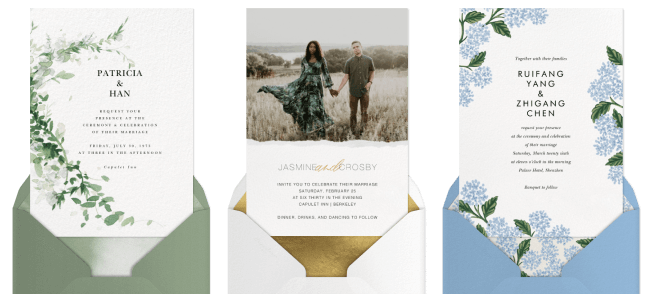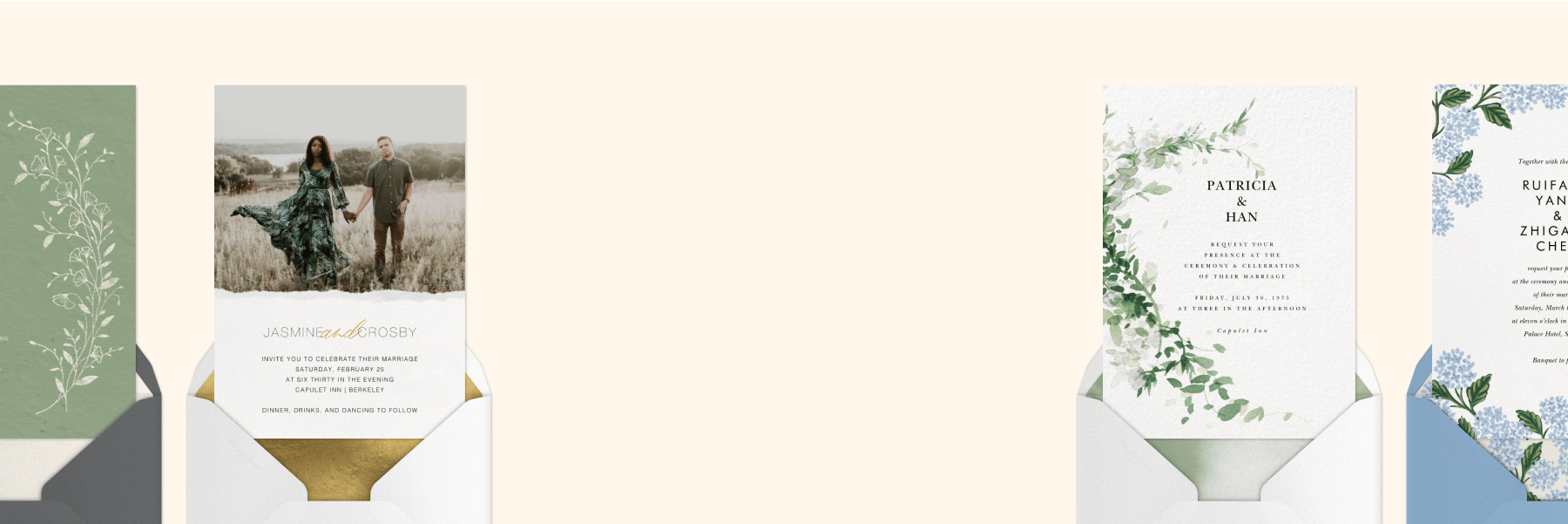10 wedding invitation etiquette do’s and don’ts
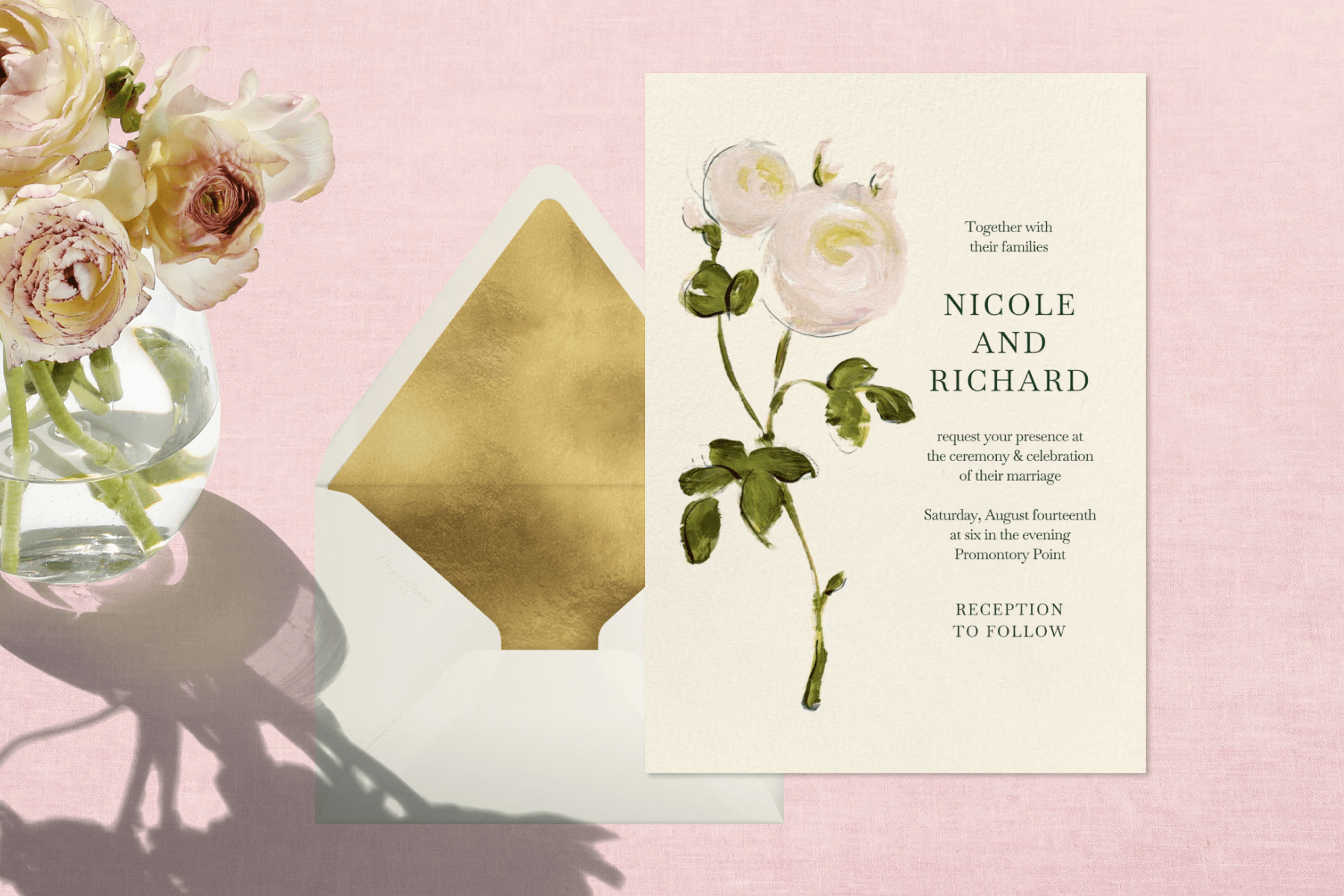
As you navigate all that goes into wedding planning, from negotiating with a wedding vendor to struggling to word your formal invitation, following simple wedding etiquette can help steer you in the right direction. When it comes to wedding invitations, there are two things you should keep in mind: the timing when sending out your wedding invitations and the details included in the invitations. Whether you are still looking for wedding invitation ideas or finalizing your designs, following proper etiquette is necessary to simplify this step in the wedding planning process.
When you follow proper wedding invitation wording etiquette and communicate the details clearly and efficiently, your guests will have all of the necessary information upfront and can focus on their excitement for the big day. If you’re not sure where to begin, read on to discover the proper etiquette for wedding invitations and our top tips for all the do’s and don’ts.
Table of Contents
1. Do: Send out wedding invitations early enough
Be sure to give your guests enough time to plan around the wedding day. Some will need to make travel arrangements, while others may need to find a babysitter or a date. In order to make sure your guests can make the proper accommodations, plan on sending out your wedding invitations anywhere from 6-8 weeks prior to the wedding date. If, however, you are having a destination wedding, it’s proper etiquette to send your wedding invitations out 12 weeks prior.
With Paperless Post’s impressive collection of digital wedding invitations from celebrated design partners such as Oscar de la Renta, Rifle Paper Co., and kate spade new york, you can easily send your invitations instantly via email, text, or a shareable link with a Custom URL. Then, track opens and RSVPs in real-time as they roll in for a stress-free planning experience.
2. Do: Include all of the necessary information
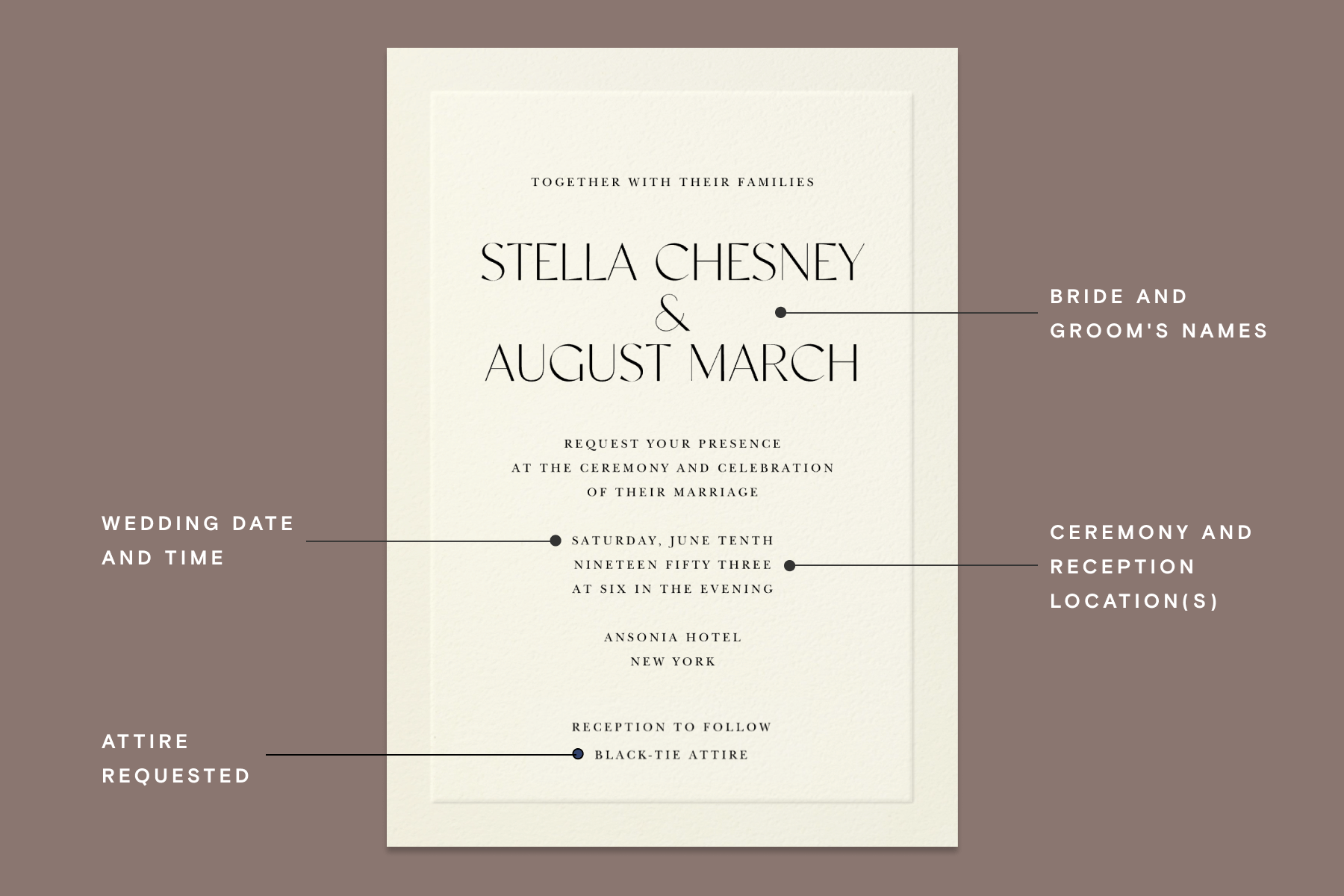
You’ll want to state all the necessary information clearly and succinctly for your guests in the invitation. You might have a beautiful invitation design, but ultimately that would be overlooked if your invitation is riddled with misinformation. With that said, simplicity is key. Be sure to include the following:
- Bride and groom’s names
- Wedding date and time
- Ceremony and reception location(s)
- Attire requested
If you have additional information to share, such as directions and parking instructions, add a Details Block on your event page to keep your invitation design sleek and organized. You can also add an Accommodations Block to provide hotel or lodging information with links, details, and photos, and a Travel Block to share information about your venue, nearby airports, or convenient train stations. Add a Wedding Party Block to introduce guests to your bridesmaids and groomsmen along with their photos and roles in the wedding, or a Links Block to link guests directly to an external wedding website with the rest of your event details.
3. Do: Provide RSVP instructions
Whether you choose digital or print invitations, you should provide clear RSVP instructions for your guests. For example, if you are sending a print invitation, you should include a reply card and a stamped and addressed envelope with each invitation. Your RSVP reply card should include a date to respond by, typically 2 to 3 weeks prior to the day of the wedding. This will give you enough time to provide your caterer with an accurate headcount. If, on the other hand, you are going with online RSVPs, include an email or URL where your guests can respond.
With Paperless Post wedding invitations, RSVP tracking is always included and makes managing guest responses much more efficient and straightforward for both you and your guests. You can also set an RSVP deadline for your guests to make sure you get an accurate headcount with enough time to properly plan and give your venue and vendors the information they need.
You can also send broadcast or direct messages through your Paperless Post wedding invitation to follow up with guests with any reminders or updates along the way. With efficient online invitations and RSVP tracking, you can spend more time focusing on other details of your wedding ceremony and reception. Plus, if you download the Paperless Post app, you can manage your RSVPs on the go.
4. Don’t: Use abbreviations
When it comes to writing out the content of your wedding invitation, be sure to pay attention to your wording conventions. One major tip is that you should spell out all of the words in the formal invitation itself. Here is a brief list of often-abbreviated words that you should spell out:
- North, South, East, West
- Apartment, Street, Avenue, Boulevard, Road
- State names
Even if the wedding is a bit less formal, your wedding invitations should follow this simple rule.
5. Do: Address your guests properly
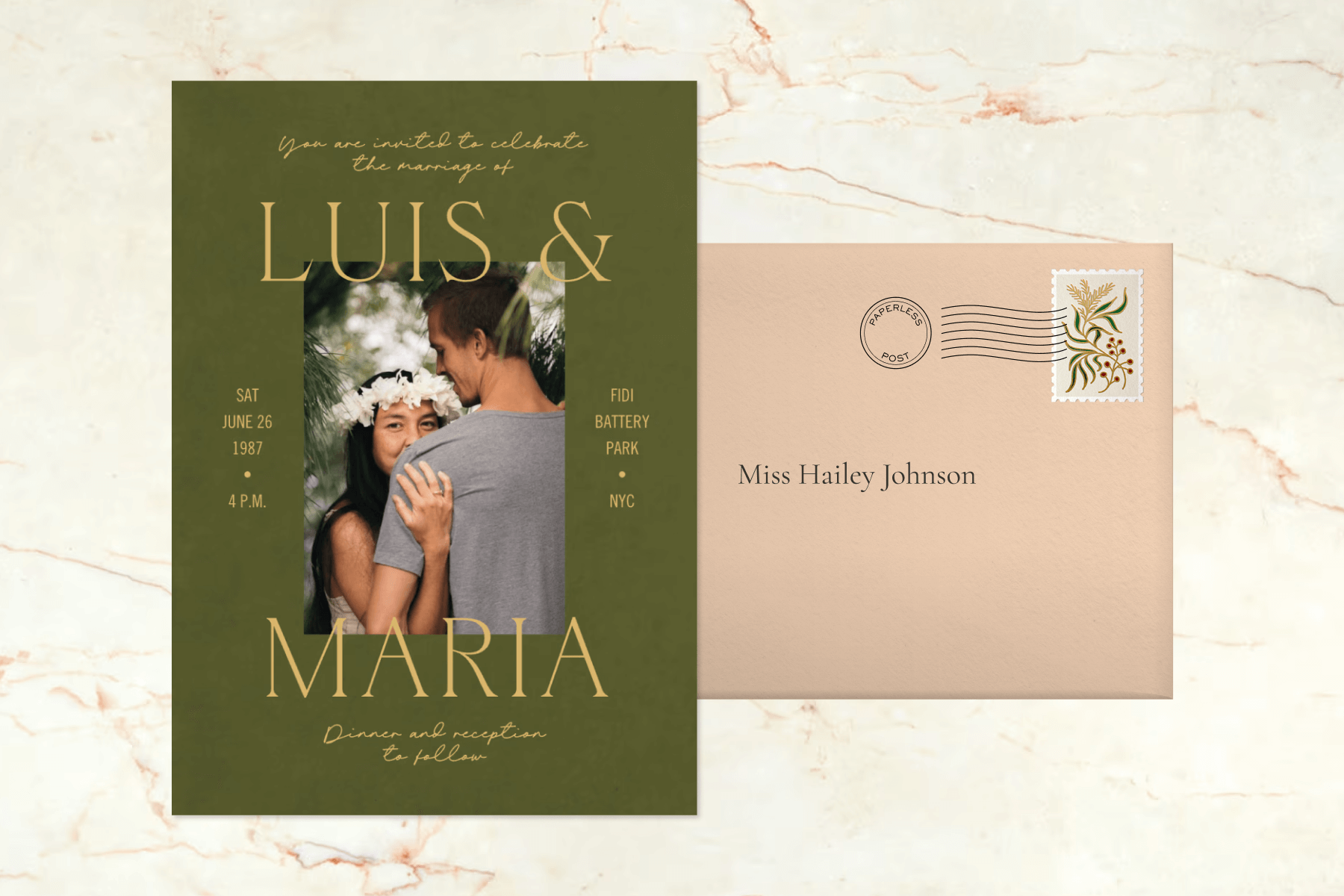
An important part of invitation etiquette is learning how to address wedding invitations. Addressing your guests properly is a key part of proper wedding invitation etiquette and likely the first part of the wedding invitation that your guests will see upon opening. That said, this is the only section of the invitation that should include abbreviations (with the exception of a Doctor or other professional title). Here is a list of guidelines on how to properly address wedding invitations with proper titles:
To a single woman:
Miss Hailey Johnson (if under 21 years of age)
or
Ms. Hailey Johnson (if over 21 years of age)
To a married woman:
Mrs. Serena Pellerito
To a single or married man:
Mr. Benjamin Jones
To a married couple:
Mr. and Mrs. Nick Walters
Or
Mr. Nick Walters and Mrs. Katherine Clarke (if she kept her maiden name)
To a married couple with children:
Mr. and Mrs. Doug Williams
Sarah Williams
Blake Williams
or
The Williams Family
To a married couple when one is a doctor:
Doctor Jennifer Thomas and Mr. Daniel Smith (if she kept her maiden name)
or
Doctor Jennifer Smith and Mr. Daniel Smith
or
Mrs. Jennifer Thomas and Doctor Daniel Smith
To an unmarried couple living together:
Ms. Emily Brown and Mr. James Jacobson
While addressing your guests may seem like a fairly straightforward and simple task, it’s one of the most important and commonly mistaken factors when it comes to wedding invitation etiquette. If possible, use your guest’s full name; however, if you are unsure of a middle name, avoid using it altogether as opposed to abbreviating it with just the initial.
6. Do: Let your guests know the requested attire
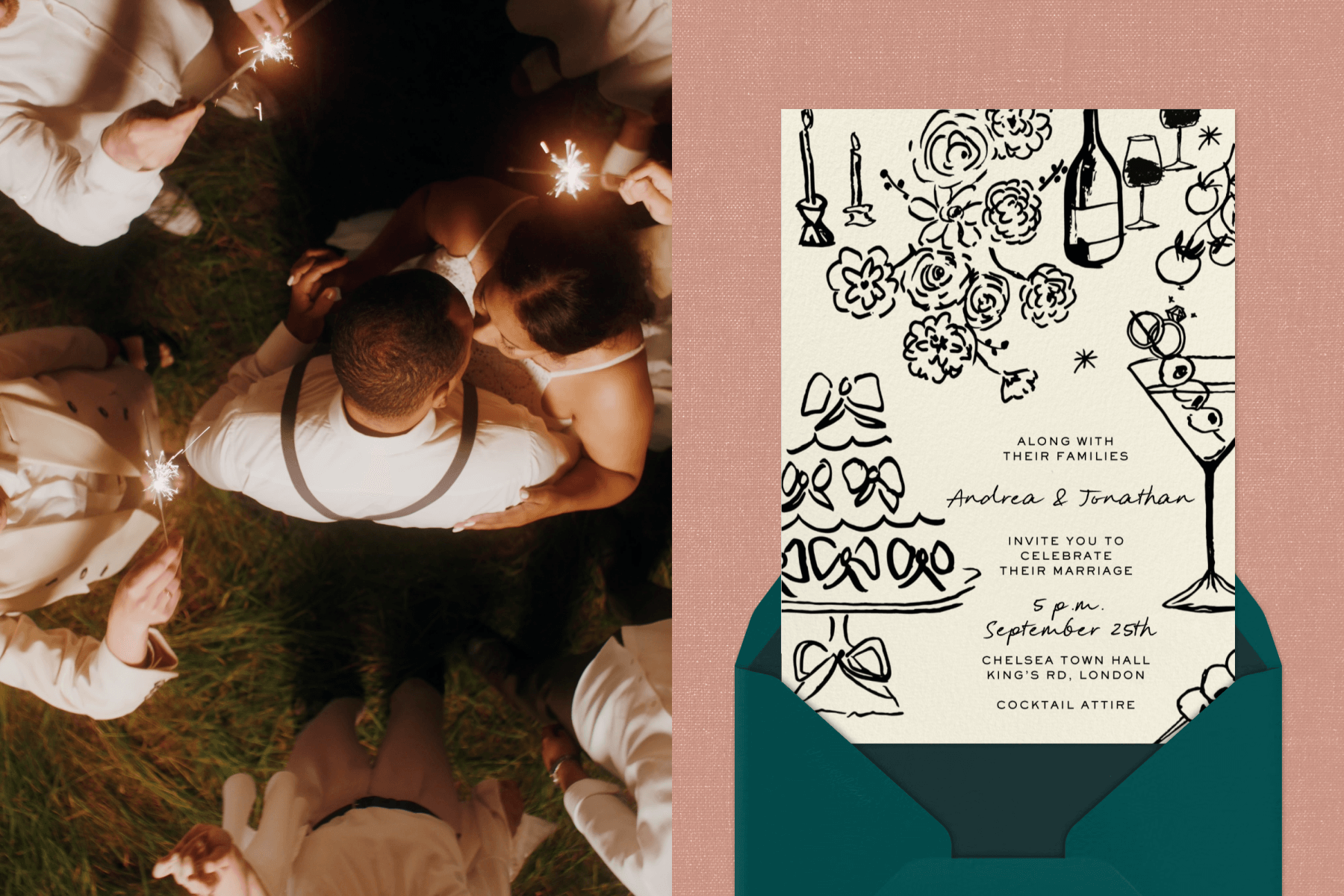
Let your guests know what they should be expecting as far as attire and dress code goes. You can add this information towards the bottom of your wedding invitation design, or include it separately in a Details Block. If you do not mention the requested attire, your guests will naturally assume the formality of your wedding based on the formality of your wedding invitation. Here are the most common wedding dress codes from most formal to most casual:
- White tie
- Black tie
- Black tie optional
- Cocktail attire
- Semi-formal
- Casual
7. Don’t: Put registry information on your invitation
For formal weddings, adding registry information directly on the invitation itself is less common and should be avoided. But you still need to direct guests to your registry without coming off as impolite.
You may want to send a separate note about your registry or include it on your wedding website. When sending wedding invitations with Paperless Post, you can include a Registry Block on your event page to conveniently provide links to one or multiple registries without committing a wedding invitation faux pas.
8. Do: Be clear whether children are invited or not
Let your guests know if children are invited or not by addressing them in the invitation. Addressing only the parents’ full names on the invitation implies that children are not invited and that the wedding is an “adults only” event. It’s considered improper wedding invitation etiquette to write “adults only” on your invitation, so clarity in your addressing is key.
If, for any reason, your guests reply with their children’s names included, simply get in touch with them and let them know that it will be an “adults only” event. The sooner you get in touch with your guests, the sooner they can make proper arrangements on their end.
9. Do: Collect meal preferences in advance
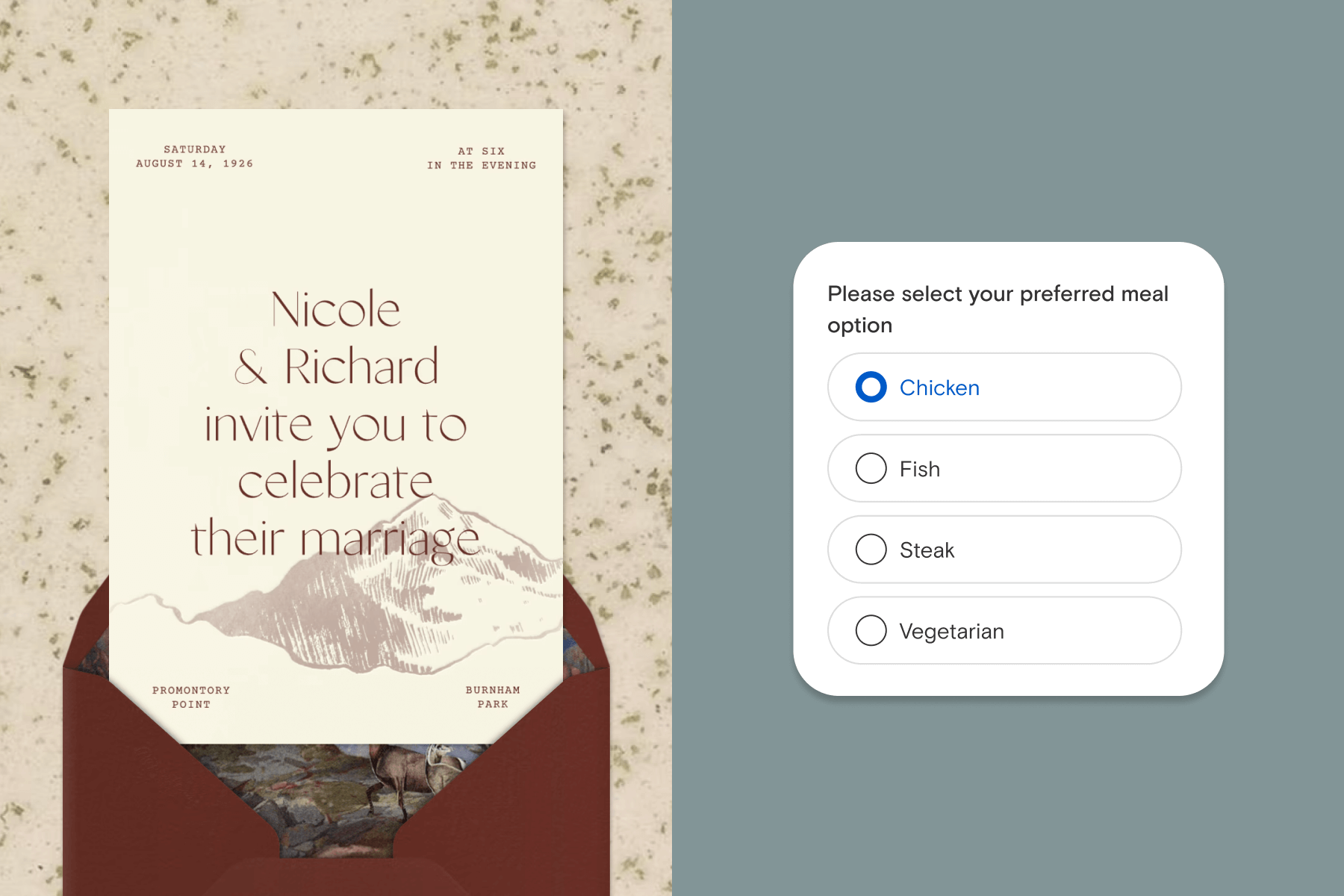
To help with wedding planning and providing correct information for your caterers, you’ll want to request guests’ meal preferences at the time of receiving RSVPs. If you’re sending paper invitations, include a section for guests’ meal preferences on the RSVP card. If you’re offering different entrée options, list them with a space for each guest to check which one they’d like, such as “Beef,” “Chicken,” or “Vegetarian.” There’s no need to get into the exact details or the side dishes of the meal, just specify which meat (or lack thereof) it is. You should also leave a space for guests to list any allergies or dietary restrictions.
If you’re sending digital wedding invitations through Paperless Post, you’ll be able to enable Guest Questions with your invitation to collect meal preferences instantly as guests RSVP. You can ask multiple-choice, check-box style, or open-ended questions to gather meal preferences, dietary restrictions, and whatever else may help with your wedding planning.
10. Don’t: Include rehearsal dinner information on your invitation
Traditionally, a wedding rehearsal dinner guest list is limited to the couple’s immediate family, the wedding party, and potentially a few close friends or out-of-town guests that the couple would like to attend. To avoid your other guests feeling left out, don’t include the rehearsal dinner information—such as location or timing—on your wedding invitation. One option is to include a separate insert card with your wedding invitation for only the guests who are invited to the rehearsal dinner, but be careful not to accidentally include it in the wrong envelopes to avoid an awkward faux pas.
You can also choose to send a separate rehearsal dinner invitation about 4-6 weeks before the wedding to the guests you’d like in attendance. Browse our collection of beautiful rehearsal dinner invitations that you can send to guests instantly, as well as convenient invitations for your welcome party and post-wedding brunch.
Honor your guests with proper etiquette
Whether you’re having a beach wedding, a destination wedding, or a formal wedding, proper etiquette is important when it comes to the wedding invitation. With these tips in mind, you can be sure to send out wedding invitations that are elegant not only in style but in wedding invitation wording as well. In taking the steps to make sure that your invitations follow proper wedding invitation etiquette, you can be sure that your guests will notice your efforts and feel how important their presence at your big day is to you.
Customizable designs from Oscar de la Renta, Rifle Paper Co., kate spade new york, and more.